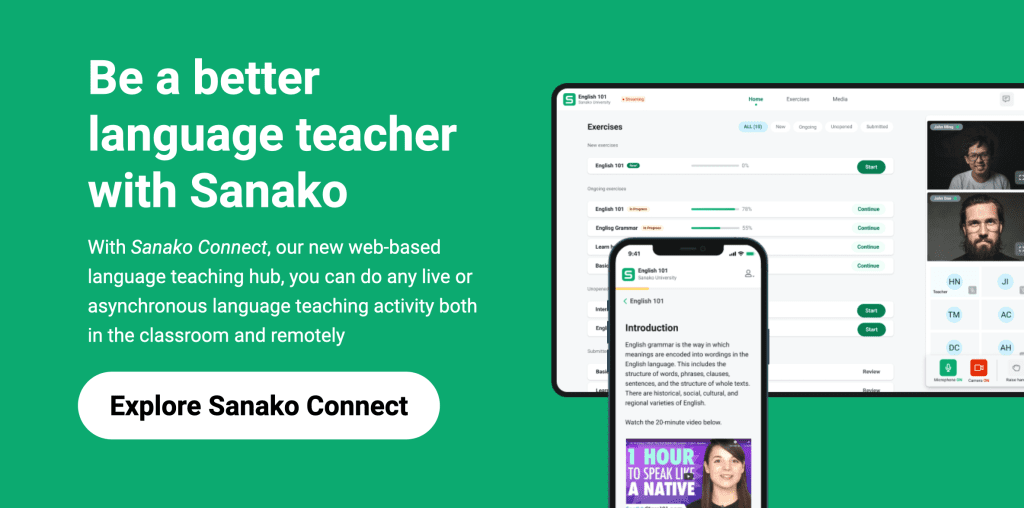As with all things in life, language teaching methods and resources go through trends. Certain approaches are, at different times, considered hot and widely celebrated whilst others never quite hit the heights that their impact deserve. The concept of sentence builders is certainly a hot approach at the moment and is widely celebrated across social media’s MFL community – but how does it work and how can educators use the approach in their classrooms?
What are sentence builders?
Sentence builders were previously commonly referred to and known as substitution tables. These were widely used in English Language Acquisition and were defined by H.E. Palmer as “a process by which any model sentence may be multiplied indefinitely by substituting for any of its words or word-groups, including others of the same grammatical family and within certain semantic limits”.
More recent approaches are based upon a clear recognition that students need to develop their ability to communicate in their target language. Possessing a passive knowledge of vocabulary, structure and grammatical rules is no longer sufficient.
Simply put, the sentence builder is a highly flexible, easily adaptable teaching resource that helps students to create and communicate using grammatically correct sentences. Importantly unlike many teaching tools, they do not simply rework historic grammar translation or substitution drill approaches. Rather they focus on minimising the strain on students’ cognitive load by scaffolding learning and providing everything the student needs to achieve their learning objective on a single sheet.
The theory behind the sentence builders concept
Cognitive load theory (CLT) was developed in the late 1980s by John Sweller, whilst he was studying problem solving. His research found that learners frequently deploy a technique called means-ends analysis to find answers, which requires a relatively large amount of cognitive processing capacity. As such, his research suggests that our working memory can only process a limited amount of new information at one time.
Subsequent work in 2010 by De Jong goes further, proving that when learners’ cognitive load and effort exceed their working memory, the learner is impeded. As a result, best practice suggests that learning content should be broken down into manageable chunks, so that the learner’s working memory is not overwhelmed.
As covered in our previous blog post on scaffolding, this can be most effectively achieved through scaffolding learning content. This helps students build fluency step by step as the teacher provides support which builds on their existing knowledge and experiences as they learn new skills (Fletcher-Wood, 2018). For advocates of the approach, sentence builders, “if designed and used effectively, make this all-important chunking process much easier…, (making) language learning much more fun and durable.”
How do I use a sentence builder in my language classroom?
As outlined above, each sentence builder (or substitute table) contains words and chunks of content that students can combine, as instructed or working independently, to create sentences and deliver them orally or by writing them out. As such, each sentence builder can help learners generate tens, hundreds or even thousands of different sentences.
Each sentence builder is prepared in advance by the teacher to address the particular learning objective for that lesson. In fact, well-designed sentence builders can be used by a wide range of teaching and learning activities. Again advocates proposed that they could be used as the basis for all sorts of sentence-level tasks including ”gap-fills, sentence scrambles, word-by-word or chunk-by-chunk rebuilds, dictation (using text-to-speech), translation both ways, with varying degrees of support and scaffolding.”
Unsurprisingly there’s a significant amount of content online from educators reviewing their use of sentence builders in language teaching. A quick summary of the material highlights the following benefits:
- They are a fantastic way of teaching vocabulary in context and for structuring and organising essential knowledge to be learnt in an accessible way.
- ALL students are able participate and make progress in the activity, regardless of their ability level or how well they retain information in their memory.
- Similarly, students are able to drill high value, accurate grammar structures, regardless of their starting point.
- Teachers can use the approach to plant seeds of content, grammar, vocab etc. that they plan to teach in future lessons.
- Students are able to practise all four skills, reading, writing, listening and speaking over the course of the activities, building their confidence.
- The level of scaffolding can be easily amended to make the lesson easier or harder.
How can Sanako Connect help?
Modern language teaching tools like Sanako Connect can be a big support for educators looking to create their own sentence builders. Its flexibility allows teachers to easily copy-paste in tables in order to create sentence builders. These can be easily enriched with recording tasks, gap fill exercises or even with live pair/group discussion activities.
Most importantly, such resources can be shared with students via a single virtual lesson link. Educators can also provide detailed feedback to individual students or the whole class – such feedback can be powerfully used to identify areas for improvement and focus in future lessons. Students can also complete their work in both asynchronous or asynchronous settings.
Whatever approach you use to improve your students’ language skills, Sanako’s market-leading tools include a wealth of unique features that help language educators teach languages more efficiently and more successfully. It’s why the world’s leading educational institutions choose Sanako as their preferred supplier to support online and in-person lesson delivery.
If you are interested in learning more about how Sanako Connect supports language teachers and students and would like to see how it could benefit your institution, book a FREE remote demo now to see them in action.

